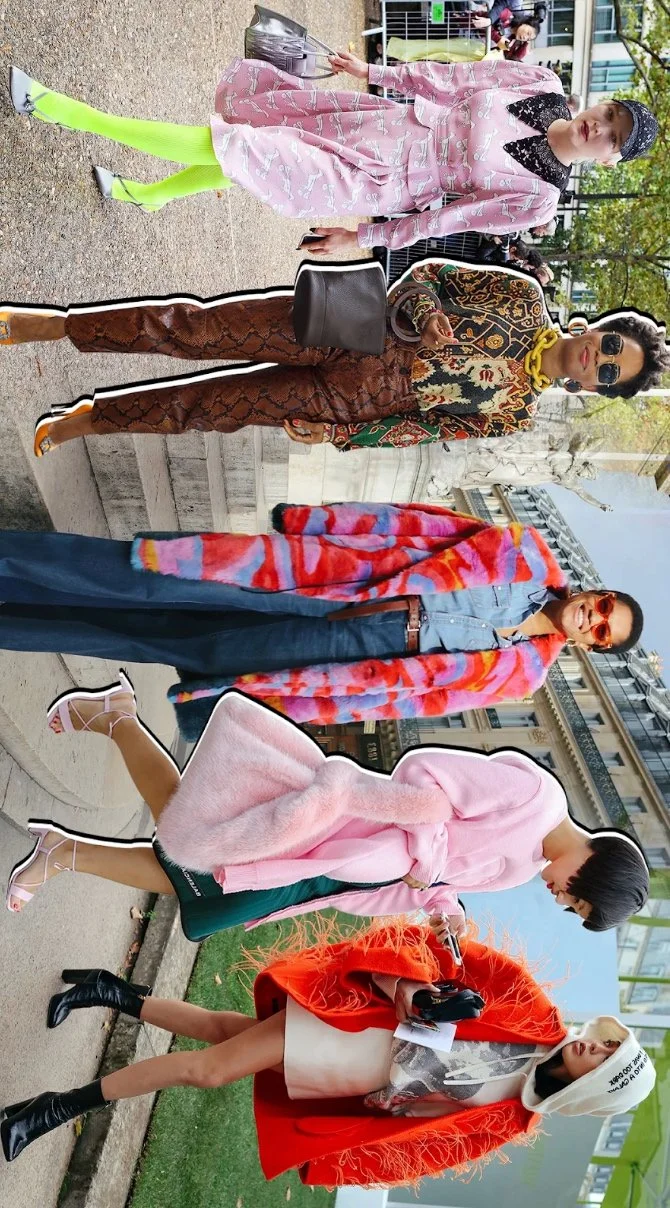Clashing Perspectives of Overconsumption vs Underconsumption in Fashion Media
Written by Jordann Landretti
Showcasing wealth and status is often conveyed through the price and quantity of one’s belongings. Consumers are encouraged to heighten their social status through the possession of excessive name-brand and designer items such as Lululemon athleisure or multiple Goyard and Hermès handbags. Content creators often post large shopping hauls or PR packages full of items brands send to them for free.
In the videos, creators display towers of boxes that contain all kinds of products such as clothing, skincare, and even drinks. Christmas list videos are also trending currently, with some of these lists totaling thousands of dollars. These are all examples of the overconsumption phenomenon circulating social media spaces.
Overconsumption fashion influencers base their platform on convincing the average consumer to purchase the trendiest, must-have products, but the list is never-ending. This type of content appeals to two kinds of consumers; the ones who can afford to shop and want to know what to buy vs. the ones who cannot afford to shop but want to live vicariously through these creators. Both of these types of viewers encompass a vast majority of people consuming fashion media, which is why this trend has grown exponentially.
This phenomenon can also be attributed to how well it feeds into the capitalist society of the United States which is all about quick consumption and wanting the best shiny new item. For those who cannot afford the more expensive items shown in shopping hauls, fast fashion retailers, such as Shein, have seized the opportunity to sell lower quality iterations of these trendy products in mass quantities. The overproduction of popular items that quickly become obsolete ultimately leads to large amounts of product waste. This lack of sustainability is a detriment to the environment.
On the other hand, with all the overconsumption content that is in-your-face shopping hauls, there is now a growing desire for de-influencing. This is content that criticizes currently trending clothing or other products that are being pushed by an overconsumption influencer, and presents arguments for why these products should be avoided or are unnecessary. It encourages consumers to use what they already own until the product reaches the end of its life.
With clothing, this content will make suggestions like wearing clothes until they wear out or do not fit. It is also labeled as “underconsumption core” which can be represented by people clearing out their closest and reverting back to basics and simple style. The growing popularity of underconsumption could be attributed to the increase in inflation and cost of living, which causes the overconsumption lifestyle to be even less attainable to the average consumer.
Underconsumption and overconsumption show up in fashion media through parallels with a minimalist and maximalist style of clothing. For example, underconsumption is defined by owning limited amounts of clothing and styling of basic simple pieces that all go together, similar to a capsule wardrobe. A minimalist style typically relies on neutrals, basic tees, jeans, and simple clean lines and silhouettes. It does not include many statement pieces, but everything can be paired together to create multiple outfits. This style focuses on quality over quantity, sophisticated basics that don’t stand out. A maximalist style is about being bold, grand, and standing out with clothing styles.
Typically you will see a lot of layers, patterns, textures, and colors. It requires owning lots of different pieces that don’t all go together because it's about having many statement outfits and looks. A maximalist style is difficult to achieve with less clothing, which separates it from minimalism and underconsumption, but still does require thoughtfulness behind pieces to achieve a level of cohesiveness. While overconsumption typically doesn’t require a lot of thought behind buying, this idea, like maximalism, is about obtaining many different articles of clothing. Both of these styles are creative even though they follow very different themes. And they both have a space in fashion media, similar to how both overconsumption and underconsumption can exist at the same time.
The abundance of fashion trends makes it difficult to place boundaries on what you need to buy. Thus, opening up a space for content creators to tell you what you should and shouldn’t buy. I think that there can be limits on how many kinds of each thing you need, especially when having goals of saving. There will always be more clothing and other fashion items for you to buy and discourse online on whether or not you should buy these things. This content can be used to give multiple perspectives and information for you to decide what will be best for you.
A helpful way to navigate this is by making a pro and con list about why you want each item. You can also take in the inventory of your current closet and try to see if you can create outfits with the new pieces you want to see if they would make a good addition to your collection, which works for both a maximalist and minimalist style. Overall, you may come across both overconsumption and underconsumption influencing fashion content, and I hope what you take from this article is to think critically about it and make educated decisions on what to add to your closet.
Edited by Hana Razvi, Olivia Daly & Katherine Rubinstein





